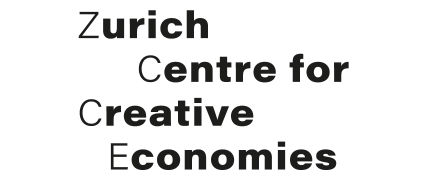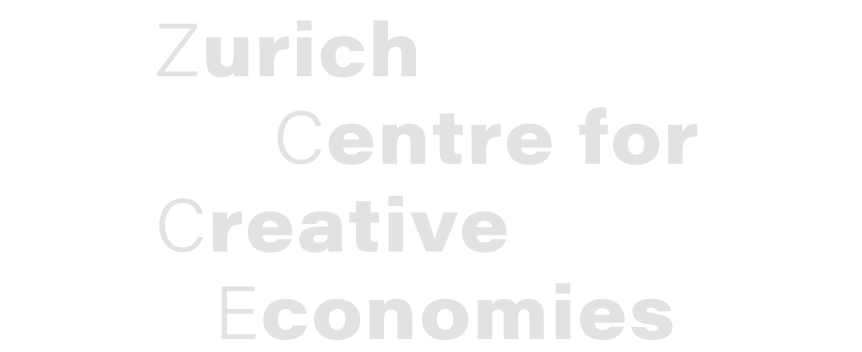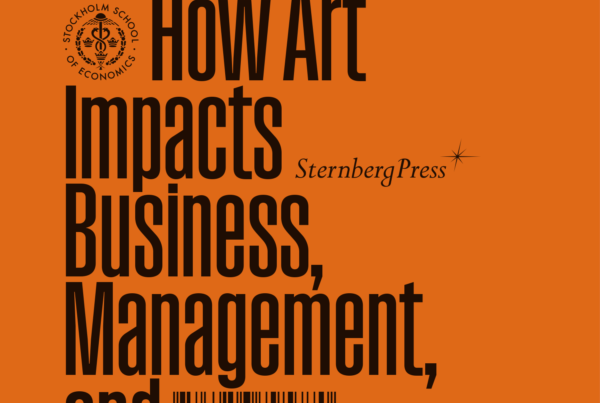
Edited by Roberta Comunian, Alessandra Faggian, Jarna Heinonen, and Nick Wilson
Elgar Modern Guides
A review by Carole Gürtler
This book assembles a collection of fresh perspectives on creative economies. With an interdisciplinary approach, it encompasses a wide array of contributions that offer insights across various fields, such as arts and cultural management, cultural policy, cultural sociology, economics, entrepreneurship, management and business studies, geography, humanities, and media studies.
Upon reviewing the table of contents and scrolling through the book, numerous chapters piqued my interest even before delving into the approximately 300-page volume. For example, the inquiry into how social network analysis contributes to comprehending the creative and cultural industries, or the significance of geographic information system (GIS) for the creative economy and its geographical dynamics. Additionally, the studies on the influence of cultural entrepreneurship on ethnicity and migrant communities, along with the growing prevalence of resistance in the creative economy, were particularly intriguing.
From diverse communities to GIS and social networks
The Geographic Information System (GIS) approach, for example, delineates how participants in resistance movements within the creative economy address inequalities and precarious labour market conditions by engaging stakeholders and pushing for change from within the ecosystem. While creative practitioners often face challenging work situations, they are also very aware of their position within a broader socio-economic system. Consequently, they want to change the narrative of creative workers and demand sustainable and substantial structural change and greater recognition of their value and work. While the intensity of these resistance movements varies from country to country and context to context, it is undeniable that a collective resistance is building up, slowly but steadily leading to a shift in inclusivity and sustainability in the creative economies.
Speaking of inclusivity, the chapter about an eventual impact of public policy interventions targeting ethnic groups in so-called “super-diverse cities” is also worth highlighting. While the purpose might be well intentioned, such policies may lead to even further discrimination. The publication points to research that showsthat trust issues, the historic context, or the locality of ethnic and migrant communities are often neglected when drafting support policies. More knowledge about cultural entrepreneurship among these communities could call into question ongoing public policies. A better understanding of the specific barriers and challenges faced by such, usually urban, communities could lead to a more nuanced understanding of the particularities of communities in diverse cities. New approaches for stronger inclusion might enable more diversity on a very local community level in cities that claim to be multicultural and to promote diversity and inclusion. “Cultural entrepreneurs do not operate in a vacuum,” writes the author, “and local policymakers need to appreciate the connections between super-diverse communities, locality, structure, and the values that underpin these relationships.”
The topic of GIS and its use in the creative economies builds on another concrete case study. It is mapping the creative economies of the Val Gardena in Italy to understand the relations between creative crafts activities and tourism in the valley, thus helping craft practitioners, planners, and policymakers in decision-making. The authors argue that GIS allows a more complex approach to analysing and understanding how culture, creativity, and spatiality interconnect and interact. The examples focus on information about the respective ecosystems from mainly a spatial anthropology perspective. They allow forecasts in land use and spatial distribution of creative firms, investigate artistic supply lines and movements, outline patterns of cultural consumption or participation, and, show links with tourism. While the researchers do not shy away from admitting that GIS does have its limitations – mainly the lack of contextualization of GIS technologies and non-quantitative data and methods – their call for addressing spatiality in the creative economies is highly interesting. Again, the empirical data gathered through such research approaches could influence policymaking in the creative economies, specifically when it comes to cultural planning and effective communication with the public.
Another approach presented in the publication to better understand the complexity of the cultural and creative industries is an analysis of the use of social networks. Social networks are crucial to the effective functioning of the creative and cultural industries, as the author of this chapter argues; decades of research have highlighted the importance of activities across the value chain. Social and business networks are well known and heavily used to find work, create teams and communities, or promote products and services. However, their use to trace linkages and allow a systematic analysis and exploration of the connection between the cultural and creative industries and other economies that are usually not part of the standard industrial classifications of the cultural and creative industries might be less known. This is regrettable as it would allow a more in-depth discussion about the increasing overlaps and “blurring boundaries” between economies. Additionally, it would better illustrate the highly diverse work of creative practitioners and companies, usually not sufficiently captured under the common definitions of the cultural and creative industries. To give an example from research done in the UK: many enterprises identified as part of the performing arts community seem to have a strong connection to the health sector. The positive impact of performing arts activities on patients when engaging in cultural and creative activities seem to be increasingly acknowledged; health actors seem to actively refer patients to creative practitioners and companies. With such activities often falling out when assessing the social and economic value and impact of the cultural and creative industries, the social network analysis approach could make a broader understanding of the system possible. Having a more accurate picture of how different activities relate to each other may serve policy interventions, as well.
A process, not an economy by itself
The author of the concluding chapter stresses that the development of inclusive and sustainable creative economies can no longer be limited to the arts, heritage, and cultural and creative industries. “A more inclusive ecological perspective is needed… The task of cultural development outlined here challenges us to fundamentally reconsider the relationship between culture and sustainable development”, he argues and advocates for an “alternative vision of the creative economies as social systems of value recognition focused on supporting and expanding the resources and infrastructure needed for people to recognise what they have reason to value.”
The compendium concludes by acknowledging the uncertainty surrounding the precise definition of the creative economies. The creative economy is a continuously evolving field of interpretation. Constant innovation is intrinsic to it. Its flexible areas of involvement and interactions, crossing disciplines, sectors, and economies, complicate its definition. The authors in the publication employ various terminologies to characterize the creative economies, each definition being contextually valid. However, these definitions diverge in their portrayal of the same fundamental situation, thereby highlighting the complexities and opportunities inherent in current discussions. To foster inclusive and sustainable creative economies, it is nevertheless suggested that we refrain from viewing it as a distinct segment within the broader economy, but rather as a process that enhances the potential of flourishing economies.
A broad range of insights and well-structured
The publication assembles a collection of fresh perspectives and contemplations on creative economies. With an interdisciplinary approach, it encompasses a wide array of contributions that offer insights across various fields, such as arts and cultural management, cultural policy, cultural sociology, economics, entrepreneurship, management and business studies, geography, humanities, and media studies. Although it mainly discusses research in the United Kingdom, Australia, and Italy – countries with well-developed creative economies and exemplary support policies -, its content is sufficiently diverse to facilitate knowledge transfer and local applicability.
The book is structured into four parts, each dedicated to a specific area of interest for the authors. Every chapter contains additional references, emphasizing the publication’s objective of not providing definitive conclusions but rather encouraging further research. Part One discusses the difficulties in defining creative economies and introduces new approaches and methodologies for analyzing intricate impact and systems. Chapter Two delves into the field of entrepreneurship particularly focusing on inclusivity and business models, such as the characteristics of microentrepreneurs and the concept of local creative ecosystems within the broader scope of the creative economy. It also examines public policies related to cultural entrepreneurship and their effects on ethnic and migrant communities, as well as the integration of creative entrepreneurship into higher education. Chapter Three explores networks, locations, and mobilities, highlighting their relevance to enable supportive environments for education, work, and production. Lastly, Chapter Four offers insights and speculations on a potential future of the creative economies. Will there emerge a new narrative surpassing GDP? Are movements of resistance and solidarity to observe and embrace? Can a universally accepted definition of the creative economies ever be established that accurately represents its true value to society, the economy, and the environment?
In this light, this compendium of inputs and opinions facilitates navigating the current dynamics and narratives, i.e., the vast field of information, knowledge, and creativity. It’s a captivating and enjoyable read, as it does not provide answers but rather challenges a reader’s view and may inspire creative practitioners and researchers to engage in current discourse and to test out new methods and methodologies to generate new ideas for the cultural and creative ecosystem of tomorrow.






